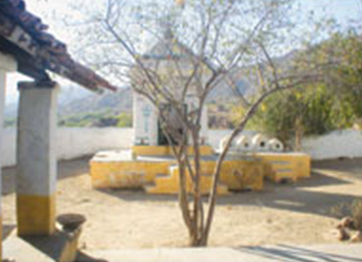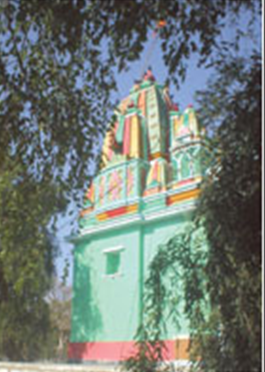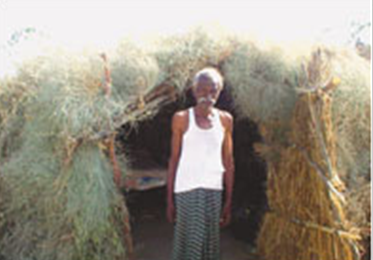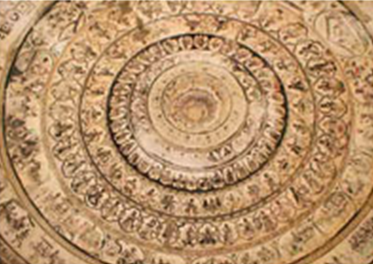Thar and Nagar Parkar temples
| Line 15: | Line 15: | ||
=Thar and Nagar Parkar, Vanishing temples= | =Thar and Nagar Parkar, Vanishing temples= | ||
| + | |||
| + | [[File:Thar and Nagar Parkar, Vanishing temples.png| Thar and Nagar Parkar, Vanishing temples |frame|500px]] | ||
Text and photographs by Ameer Hamza | Text and photographs by Ameer Hamza | ||
| Line 20: | Line 22: | ||
[http://dawn.com/ Dawn] | [http://dawn.com/ Dawn] | ||
| − | [[File:Thar and Nagar Parkar, Vanishing | + | [[File:Thar and Nagar Parkar, Vanishing temples1.png| Thar and Nagar Parkar, Vanishing temples |frame|500px]] |
Thar desert has a splendid collection of ancient temples, testimony to the presence of colourful Hindu and Jain kingdoms. We don’t know the exact number of temples in the area but one document states their number to be 14. | Thar desert has a splendid collection of ancient temples, testimony to the presence of colourful Hindu and Jain kingdoms. We don’t know the exact number of temples in the area but one document states their number to be 14. | ||
| − | |||
| − | |||
==Saldra== | ==Saldra== | ||
| Line 37: | Line 37: | ||
==Temple at Gorhi== | ==Temple at Gorhi== | ||
| + | |||
| + | [[File:Temple at Gorhi.png| Temple at Gorhi |frame|500px]] | ||
Among all temples that I have been to in Pakistan Gorhi is by far the most stunning. It is a principle Jain temple in the country. Entirely constructed from marble, probably brought from Gujerat, it dates back to 1376 AD and was built at the zenith of Jain empire in the region. | Among all temples that I have been to in Pakistan Gorhi is by far the most stunning. It is a principle Jain temple in the country. Entirely constructed from marble, probably brought from Gujerat, it dates back to 1376 AD and was built at the zenith of Jain empire in the region. | ||
| − | |||
| − | |||
The temple contains 54 domes, all beautifully built with complete balance. The focus of the temple is the main chamber which is not built in the centre, but rather towards one side and is indicated by the presence of a larger dome. On both sides of the temple are small cubicles where once the holy men stayed and meditated. | The temple contains 54 domes, all beautifully built with complete balance. The focus of the temple is the main chamber which is not built in the centre, but rather towards one side and is indicated by the presence of a larger dome. On both sides of the temple are small cubicles where once the holy men stayed and meditated. | ||
| Line 62: | Line 62: | ||
==Nagar ‘bazaar’ temple== | ==Nagar ‘bazaar’ temple== | ||
| − | + | [[File:Nagar ‘bazaar’ temple.png| Nagar ‘bazaar’ temple |frame|500px]] | |
| − | + | This temple is so called due to its presence just behind the main bazaar - the only one in Nagar. This temple, like the one at Gorhi, and must have once been a centre of activity as its fine architecture tells you. It probably belongs to Jain as the figures on it are quite similar to other Jain temples in Thar. No date of construction could be ascertained but it is at least 500 years old. I can tell that by the figures, the style of construction and by the paintings done on the walls. | |
The courtyard, save one odd pillar, has completely vanished. The outer walls still retain some of its charisma. The main hall where once the statue of a god must have stood is now long gone, either stolen or broken by some fanatic. The entrance still have few smaller statuettes but most of them are desecrated and chipped at. The inside of the room, no better than the outside, at least retains the original paints used for the colouration of the walls with exotic local fauna and flora. | The courtyard, save one odd pillar, has completely vanished. The outer walls still retain some of its charisma. The main hall where once the statue of a god must have stood is now long gone, either stolen or broken by some fanatic. The entrance still have few smaller statuettes but most of them are desecrated and chipped at. The inside of the room, no better than the outside, at least retains the original paints used for the colouration of the walls with exotic local fauna and flora. | ||
Revision as of 22:55, 2 November 2013
This is a collection of articles archived for the excellence of their content. Readers will be able to edit existing articles and post new articles directly |
Contents |
Thar and Nagar Parkar, Vanishing temples
Text and photographs by Ameer Hamza
Thar desert has a splendid collection of ancient temples, testimony to the presence of colourful Hindu and Jain kingdoms. We don’t know the exact number of temples in the area but one document states their number to be 14.
Saldra
This is a prime Hindu site in the country and is in no way lesser than the sites at Hinglaj (Baluchistan) and Sadhu Bela (Sukkur). Hindus regard it as the Mecca of their religion.
Saldra is built on the Karoonjar range of Nagar Parkar, a series of mountains whose highest peak reaches only 1000 m above sea level. This temple, only one of the few ‘living’ temples in Thar, cannot be seen from the city as it is hidden among the mountains.
Lying nestled between the mountains a non-descript, one-room temple greets us among huge boulders, a parched land and a unique set of herbs, prized for its seeds. The structure of the temple has been tampered with and the actual building does not seem to be present and it’s impossible to ascertain its age. Some say that it is 5000 years old. If that is the case, Saldra has to be one of the most ancient religious sites present in the world.
A pond of greenish water is present near the temple which Hindus regard as Ganga. They therefore bathe in it and drink from it after the yatra.
Temple at Gorhi
Among all temples that I have been to in Pakistan Gorhi is by far the most stunning. It is a principle Jain temple in the country. Entirely constructed from marble, probably brought from Gujerat, it dates back to 1376 AD and was built at the zenith of Jain empire in the region.
The temple contains 54 domes, all beautifully built with complete balance. The focus of the temple is the main chamber which is not built in the centre, but rather towards one side and is indicated by the presence of a larger dome. On both sides of the temple are small cubicles where once the holy men stayed and meditated.
Today this temple is in ruins with many domes having fallen. There are cracks on the walls of the temple, perhaps due to the mild earthquakes that have hit the area in recent times. The idols have vanished. Not one of them remains. The ones carved on the walls have been played upon by pranksters.
But the highlight of this temple is the dome on the entrance. It is well rounded but not deep. From inside it has been painted with black paint which fortunately still clings to it. The painting is done in circular band style, each strip showing courtiers, drum beaters, angels, warrior, rulers and the ruled, in many different condition.
Bohdesar temples
Bohdesar, some five km north-west from the city of Nagar, is a popular site due to its small, yet charming mosque, built by one Mahmud Shah bin Muzaffar in 1505 AD. It is built with marble brought all the way from Gujerat.
One km from this mosque is a stunning temple belonging to Jain. But its back walls have fallen over, idols have long vanished, even the stones are being removed, one by one, by the locals, who as one source informed me, use them for their home construction.
The temple is built on a high platform and is reached by a series of big, flat steps which gives an added magnificence to the temple’s structure. Kanjur and redstone have been used to built this temple but unfortunately it is in rather a bad condition. Absence of any care or maintenance work is to be blamed. Needless to say, if nothing is done immediately the entire edifice might collapse on the slightest provocation.
There are other two temples in the vicinity but lack of time disallowed me from visiting them. These Bohdesar temples, as they are known collectively, were built during the time period between 1375 and 1499 AD (http://jainsamaj.org/temples/pakistan.htm).
Nagar ‘bazaar’ temple
This temple is so called due to its presence just behind the main bazaar - the only one in Nagar. This temple, like the one at Gorhi, and must have once been a centre of activity as its fine architecture tells you. It probably belongs to Jain as the figures on it are quite similar to other Jain temples in Thar. No date of construction could be ascertained but it is at least 500 years old. I can tell that by the figures, the style of construction and by the paintings done on the walls.
The courtyard, save one odd pillar, has completely vanished. The outer walls still retain some of its charisma. The main hall where once the statue of a god must have stood is now long gone, either stolen or broken by some fanatic. The entrance still have few smaller statuettes but most of them are desecrated and chipped at. The inside of the room, no better than the outside, at least retains the original paints used for the colouration of the walls with exotic local fauna and flora.
‘Base’ temple
Because there is no name for this temple I like to call it ‘base’ temple as it is built right at the base of Karoonjar mountain range. It belongs to the Jain religion, has no construction date on it and I could find no records on its builder. The temple is a one room structure in a cubicle style, constructed with large stones. I can imagine a small deity sitting inside, but today, none is present.
Other temples
There were two more temples which can be found just outside the Nagar city. One was clearly not so ancient and seemed to have been built during the British period. It is constructed from red bricks, was in disrepair and was probably not being used by the inhabitants.
Another is the ‘living’ temple belonging to Hindus and was garishly painted in greens and reds. On asking why was that so, I was told that the Pakistan army had done so because the balloting was done in the temple!
This temple is relatively larger than the one at Saldra and has the monkey god, Hanuman placed within it.





